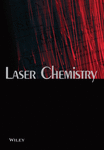Nascent Vibrational State Distributions of ZnH(X 2∑+ ) and ZnD(X 2∑+) Produced in the Reactions of Zn(41P1) With H2 and D2
Abstract
The reactions of Zn(41P1) with H2 and D2 were studied by employing a laser pump-and-probe technique. The nascent vibrational state distributions of ZnH(X 2∑+) and ZnD(X 2∑+) were determined. The distributions were much cooler than the statistically expected ones. These results are consistent with the insertive attack model proposed for other excited metal-H2 systems. The quantum yield for the production of ZnH(X 2∑+) was measured to be low; around 0.5 of that for cn4. Three-body dissociation processes to produce Zn(41S0) + H + H must be more dominant than the production of ZnH.




